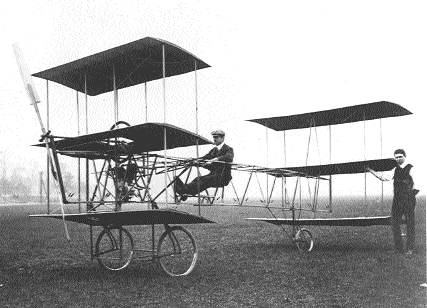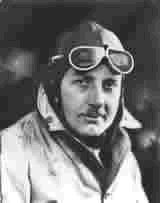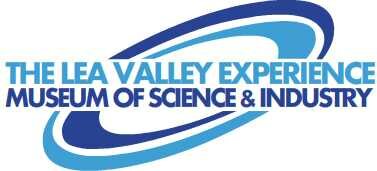Aircraft
Very few people would associate the Lea Valley with British aviation, yet besides AVRO, the first British flight in a British-built plane flown by a British pilot with a British engine that happened there in 1909, another giant in the aviation world that was also making history in the Valley in the 1900s, was the de Havilland Company at Hatfield who produced the first commercial jet airliner.
Avro

The Flight of the First All-British-Built Aircraft Flown by a British Pilot In the early 1900s, the interest in aviation began to grow in Britain, so much so that prizes were being offered to construct experimental flying models that might enhance the future development of aviation in Britain. A prize of £75 was offered by the Daily Mail newspaper for the construction of a flying model that must weigh no more that fifty pounds, and could fly higher than fifty feet, and in 1907 a competition was held at Alexandra Palace in North London which was won by the now famous aviator Edwin Alliott Verdon Roe (1877-1958).
In 1908, Roe had at last found a partner to finance the building of a full-size aeroplane. John Alfred Prestwich (1874-1952), who became famous for his JAP engines, invested some £50 into the new company, which was called the J.A.P. Avroplane Company. The partnership failed due to many arguments over what type of plane should be built, a tri-plane or a monoplane.
Not being deterred by this setback, Roe constructed a tri-plane underneath the Great Eastern Railway arches on Walthamstow Marshes, and in 1909 became the first Briton to pilot an all-British-built aircraft. The aircrafts engine was also British-built and was a 9hp JAP, which was manufactured at his former partners factory in Tottenham.
Roe then decided to mass-produce his aeroplanes and the AVRO Aviation Company was formed in 1910, and in 1929 he was knighted for his services to the development of aviation.
Over its many years, the AVRO company have produced a number of unique types of planes, the 504, the Lancaster, and Vulcan bomber being just a few.
A commercial model of the Lancaster, the Lancastrian, was the first commercial aircraft to fly from Heathrow, London. The Lancaster bomber was also adapted in World War Two to carry the famous Barnes Wallis dambuster bouncing bomb, which was partly designed in the Lea Valley, at the Royal Gunpowder Mills.
It is said that AVRO, towards the end of its illustrious history, were approached by the Government to build a flying disc.
Without Roes perseverance the history of the world as we know it today, could have been changed forever. He is one of Britains true pioneers and should never be forgotten.

De Havilland
Gypsy Moth
De Havilland Gypsy Moth (left) flown by Amy Johnson on her famous flight fro Croydon to Austrailia in 1930.
Mosquito

It is one of the paradoxes of aircraft development that some of the world's greatest aeroplanes have achieved their fame doing jobs other than the one for which they were originally designed. No better example of this could be found than the Mosquito, which, conceived as a bomber, became one of the war's most potent fighters. More than this, indeed, it was probably the most successfully versatile of any twin-engined type built between 1939 and 1945. It excelled in all the widely varied roles. Its duties included the duties of low-level and high-attack day and night bomber, long-range photo-reconnaissance, mine layer, pathfinder, high-speed military transport, long-range day and night fighter, and fighter-bomber. It served in Europe, the Middle and Far east and on the Russian front. In fact the ubiquitous Mosquito reigned supreme among General Purpose types; and of the grand total of 7,781 Mosquitos built, 6,710 were delivered during the war years.
Many Mosquitoes were built at the Wrightons Furniture factory in Walthamstow.
Comet
At the height of World War 2, in late 1941, the UK took the farsighted step of appointing a special group of experts to study what commercial transport aircraft should be planned for use after final victory. In May 1943 the second Brabazon Committee, named after the famous aviator, had its first meeting, and towards the end of that year issued a series of recommendations, one of which, called Type IV, was for jet-propelled transport. It is paradoxical that whereas, in the USA, several large jet bombers were being planned without the slightest thought of a jet airliner, in the wartime UK the reverse was true. A major factor was that in the pre-war era the United States had come to dominate the world airline market, and it was rightly felt that the only way to compete after the war would be to take bold technological leaps.
The various Brabazon recommendations quickly became associated with particular companies, and Type IV went to de Havilland. This enterprise had both an aircraft company, with a design team led by R.E. Bishop and R.M. Clarkson, and an engine company, whose top engineers were F.B. Halford and J.S. Moult. In early 1944 both de Havilland teams studied the Type IV, and after many possibilities had been examined, they were given authority to go ahead with D.H.106 in February 1945. After many various prototype designs were constructed, and trials of engines took place, in 1949 the first Comet rolled at Hatfield, and was tested by John Cunningham two days later.

Though the Comet was less radical than it might have been, it nevertheless broke new ground in almost every part of its aerodynamics, structure, propulsion and systems. In 1951 the first production aircraft flew, and an unrestricted passenger-carrying certificate of airworthiness was awarded in early 1952. The Comet went into service with BOAC later that year. However, after a number of fatal accidents the Comet was grounded. There followed the biggest technical investigation up to that time. The problem was found to be a fatigue crack in the fuselage. Nevertheless, despite BOAC ordering a number of new advanced Comets, the credibility and safety of the plane had by then been severely damaged. Despite Dan-Air showing the world what the Comet could finally achieve even through the 1973 fuel crisis when the price of kerosene trebled, the Comets end was in sight. That happened in 1980 closing another chapter in the history of aviation.

Sir Alan Cobham
Sir Alan Cobham (left) famous for his invention of the in flight refueling system.
In 1932 he held a series of national aviation day displays in Waltham Forest. One such display was held at Low Hall. Some of the planes on show that day was a Red Avro, the Hanley Page Imperial Airways liner and an autogiro plane.
Ching Fliers
The Famous Ching Fliers 1914 - 1918 This nickname was given to the pilots of the Royal Naval Air Service Station based at the Chingford aerodrome during WW1. A magazine named after them was produced at the station from October 1916 to February 1918 and had 24 issues during that period.
Chingford Aerodrome
During WW1 1000 pilots received their training at the aerodrome. In September 1918 the station operation number became No.138 Squadron. In 1919 the squadron was dispended but was reformed in 1941. The Aerodrome was closed in 1919 but was used many time by Sir Alan Cobham for his National Avaiation Day displays. His 1932 ended at Chingford. The local Guardian newspaper described the event as Sir Alan Cobham and his event at Chingford. Both Councilors and officers of the Chingford Urban District Council attended the event. In 1935 work on the William Girling Reservoir was started and the aerodrome was lost for ever.

The left view shows Scout Sparrow No. 1536, one of the two Blackburn-built Aircraft, after delivery to the R.N.A.S. aerodrome at Chingford in 1915.

Gnome Engines
The earliest aero engines were stationaryeither radial in style or in line. The Antoinette series was the most commonly used. These were succeeded by the popular rotary engine. The best known were the Gnome and Le Rhône, which was used in the Avro 504's.
Gnome engines were built in Walthamstow during the First World War.




 The Flight of the First All-British-Built Aircraft Flown by a British Pilot In the early 1900s, the interest in aviation began to grow in Britain, so much so that prizes were being offered to construct experimental flying models that might enhance the future development of aviation in Britain. A prize of £75 was offered by the Daily Mail newspaper for the construction of a flying model that must weigh no more that fifty pounds, and could fly higher than fifty feet, and in 1907 a competition was held at Alexandra Palace in North London which was won by the now famous aviator Edwin Alliott Verdon Roe (1877-1958).
The Flight of the First All-British-Built Aircraft Flown by a British Pilot In the early 1900s, the interest in aviation began to grow in Britain, so much so that prizes were being offered to construct experimental flying models that might enhance the future development of aviation in Britain. A prize of £75 was offered by the Daily Mail newspaper for the construction of a flying model that must weigh no more that fifty pounds, and could fly higher than fifty feet, and in 1907 a competition was held at Alexandra Palace in North London which was won by the now famous aviator Edwin Alliott Verdon Roe (1877-1958).
 It is one of the paradoxes of aircraft development that some of the world's greatest aeroplanes have achieved their fame doing jobs other than the one for which they were originally designed. No better example of this could be found than the Mosquito, which, conceived as a bomber, became one of the war's most potent fighters. More than this, indeed, it was probably the most successfully versatile of any twin-engined type built between 1939 and 1945. It excelled in all the widely varied roles. Its duties included the duties of low-level and high-attack day and night bomber, long-range photo-reconnaissance, mine layer, pathfinder, high-speed military transport, long-range day and night fighter, and fighter-bomber. It served in Europe, the Middle and Far east and on the Russian front. In fact the ubiquitous Mosquito reigned supreme among General Purpose types; and of the grand total of 7,781 Mosquitos built, 6,710 were delivered during the war years.
It is one of the paradoxes of aircraft development that some of the world's greatest aeroplanes have achieved their fame doing jobs other than the one for which they were originally designed. No better example of this could be found than the Mosquito, which, conceived as a bomber, became one of the war's most potent fighters. More than this, indeed, it was probably the most successfully versatile of any twin-engined type built between 1939 and 1945. It excelled in all the widely varied roles. Its duties included the duties of low-level and high-attack day and night bomber, long-range photo-reconnaissance, mine layer, pathfinder, high-speed military transport, long-range day and night fighter, and fighter-bomber. It served in Europe, the Middle and Far east and on the Russian front. In fact the ubiquitous Mosquito reigned supreme among General Purpose types; and of the grand total of 7,781 Mosquitos built, 6,710 were delivered during the war years.

 The left view shows Scout Sparrow No. 1536, one of the two Blackburn-built Aircraft, after delivery to the R.N.A.S. aerodrome at Chingford in 1915.
The left view shows Scout Sparrow No. 1536, one of the two Blackburn-built Aircraft, after delivery to the R.N.A.S. aerodrome at Chingford in 1915.